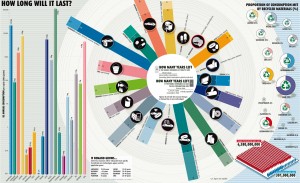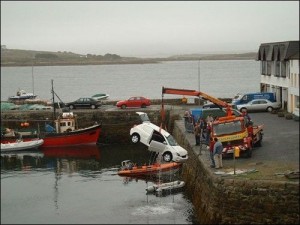Elinor Ostrom won this year’s Nobel in economics for a lifetime’s careful study of the ways that communities work together to manage shared resources. Her real-world case studies include pastures, ground water, and cleaning the fridge at work. To an optimist of human nature, the idea that people can learn how to cooperate seems so blindingly obvious that it’s not worth writing papers about, yet classic economic theory predicts “the tragedy of the commons” for things that aren’t under centralized control in one way or another. That is what Elinor shows to be false, through decades of careful field work.
The above video is an overview of her work given shortly after she won the prize. Crooked Timber also has a good discussion:
Lin’s work focuses on the empirical analysis of collective goods problems – how it is that people can come up with their own solutions to problems of the commons if they are given enough room to do so. Her landmark book, Governing the Commons, provides an empirical rejoinder to the pessimism of Garret Hardin and others about the tragedy of the commons – it documents how people can and do solve these problems in e.g the management of water resources, forestry, pasturage and fishing rights. She and her colleagues gather large sets of data on the conditions under which people are or are not able to solve these problems, and the kinds of rules that they come up with in order to solve them.
In other words, Elinor went out in the world and studied the use of common resources in real situations, rather than starting with the supposition that everybody acts in purely self-interested fashion all the time. The concept of self-interest has been at the core of economic theory since Adam Smith first postulated the “invisible hand” of the market, and it really does correctly predict a great deal of human economic behavior. But it doesn’t explain everything, and overuse of that assumption leads to predictions that simply aren’t true. (Besides which, it’s a mistake to conflate a theoretical model with a moral stance, take note Wall Street.)
From a really nice NPR interview with her:
The core is still an individual, but the individual is a little more complex than the caricature of “me first always”. The “me first always” caricature model can be used, mathematically, to predict outcomes when the problem is pure private goods and you have a highly competitive market. But we have to also understand that humans are more complex than immediate material self-interest as the only goal. So humans learn norms and ways of expressing themselves, and the importance of love of brothers and sisters and their spouse, and members of their community. Then, instead of taking my individual interest only into account, an individual outside of a really narrow market situation can take the broader community into account.
Which is something that hippies have been saying since, I don’t know, the invention of sitting around and getting stoned together, but Elinor puts academic rigor behind that — the kind of careful analysis that is necessary if you are government policy maker and it’s your job to figure out how use the natural resources of your country in a sustainable way.
For the immediately curious, here‘s a bit of her thinking:
Analysing the design of long-enduring common pool resource (CPR) institutions, Elinor Ostrom (1990) identified eight design principles which are prerequisites for a stable CPR arrangement:
1. Clearly defined boundaries
2. Congruence between appropriation and provision rules and local conditions
3. Collective-choice arrangements allowing for the participation of most of the appropriators in the decision making process
4. Effective monitoring by monitors who are part of or accountable to the appropriators
5. Graduated sanctions for appropriators who do not respect community rules
6. Conflict-resolution mechanisms which are cheap and easy of access
7. Minimal recognition of rights to organize (e.g., by the government)
8. In case of larger CPRs: Organisation in the form of multiple layers of nested enterprises, with small, local CPRs at their bases.
Further revelations await in this 2000 paper of hers, “Collective Action and The Evolution of Social Norms.”



